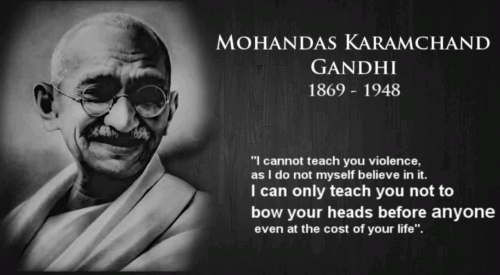Gandhi Google Doodle: His 140th Birthday Celebrated By Google
Gandhi Google Doodle
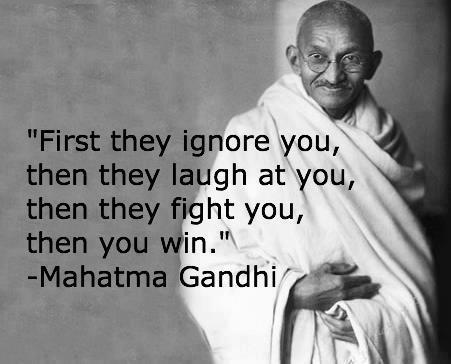
Gandhi Google Doodle
On October 2nd 2009 the Google doodle team unveiled a Gandhi Google Doodle celebrating what would have been the 140th birthday of the man who is widely regarded as the father of modern India. The Gandhi Google Doodle featured a depiction of the Indian pacifist as the first “G” in the search engine‘s logo.
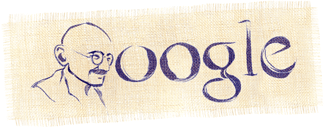
The rest of the Google logo in the Gandhi Google Doodle was in an indigo, printed font style on homespun style cloth backdrop.
Mohandas Karamchand Gandhi was born October 2nd 1869, in the Indian region of Hindu. He was born into merchant caste family which lived in the coastal town of Gujarat in West India. Showing talent from an early age, in 1888 he travelled to England in order to study law at the prestigious University College London. From here the young Gandhi went on to train as a barrister at the Inner Temple.
Whilst living in London, Gandhi tried to take up English traditions, even taking dance lessons. However he took no pleasure in eating the bland vegetarian food provided for him by his landlady. Due to this he often went hungry, until he discovered one of London’s few vegetarian restaurants. Whilst living in London, Gandhi joined the Vegetarian Society, an English society that operated during the nineteenth century. The members of the Vegetarian Society activity promoted and followed strictly meat free diets. After joining the society he was quickly nominated to the society’s executive committee and later went onto form a local Bayswater chapter.
In June 1891, Gandhi was called to the bar. Following this he travelled from London back to India. On his return he learnt that his mother had died whilst he was in London and that his family had kept it from him. The following two years were tarnished with strive and periodic failure for the young Gandhi. His attempts to set up a legal practice in Bombay failed because he was simply too shy to speak up in defence of his clients in the courtroom environment. Following this failure Gandhi went to Rajkot. Here he earned a modest income for a time, drafting petitions for litigants. However he was forced to close when he got on the wrong side of an English officer.
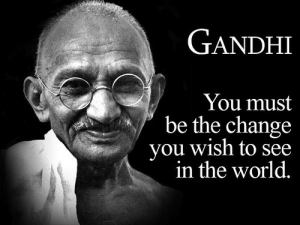
Following these events, Gandhi accepted in 1893 a year long contract from an Indian firm for a posting in the Colony of Natal, modern South Africa. At this time the Colony of Natal was part of the British Empire. Aged just 24, Gandhi arrived in South Africa and began work as a legal representative acting on behalf of Muslim Indian Traders who were operating in the city of Pretoria. In total, Gandhi ended spending a total of 21 years in South Africa. Many historians accept that it was here that he shaped his political views, ethics and political leadership abilities. The 21 year metamorphoses was such that on returning to India Gandhi had become deeply skilled in the following areas, media relations, public speaking, self-promotion, fundraising and negotiations.
A key moment which was to shape Gandhi’s non-violent views occurred in 1906. At this time the British Empire declared war on the Zulu Kingdom within the Natal. Gandhi pushed for the British government to accept Indians as recruits for the war as he felt that participation would strengthen their claims for full citizenship. His offer was accepted and the British commissioned an Indian corps comprising of 20 Indians with Gandhi as their commander. The Indian corps acted as stretcher bearers, carrying wounded British soldiers from the front to field hospitals. The corps was in operation for less than two months and the experience taught Gandhi the futility of attempting to directly challenge the military power of the British army. From this point he realised that it could only be challenged and resisted in a nonviolent manner.
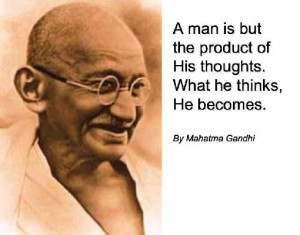
This was not the first time that Gandhi served with the British army. In 1900 he had formed a group of ambulance drivers to serve in the Boer War. This action was an attempt of Gandhi’s part to disprove the then widely held idea that Hindus were unfit for what were deemed “manly” activities. His recruitment campaign was extremely successful and he managed to raise over eleven hundred Indian volunteers for the cause. Gandhi and his Indian ambulance drivers served at Spion Kop. Here they carried wounded servicemen physically for miles as the mountainous terrain was unsuited for ambulances. It was particularly pleasing to Gandhi when he and his fellow Indian’s efforts were recognised when a commentator said that European stretcher bearers would have been unable to make the journey without food or water. Gandhi and his Indian ambulance driver’s efforts were recognised as Gandhi and 37 of the Indian ambulance drivers were rewarded with the War Medal. In addition, General Redvers Buller specifically mentioned the courage of the Indians in his dispatch.
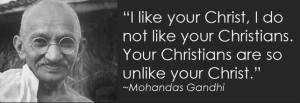
On his return to India, Gandhi established himself as a leading individual fighting for the cause of Indian independence. During the First World War he agreed to actively recruit Indians for the war effort. As opposed to his recruitment efforts in Africa, these recruits would be fully fledged front line combatants. It is thought that Gandhi did this as he felt it would strengthen the cause for Indian independence. However many observers felt this move was a direct contradiction of his nonviolent sentiments.
After a stint in Indian Congress, by 1921 Gandhi had the support base to employ his chosen tactics of non-cooperation, nonviolence and peaceful resistance against the British Raj. This support network was based on Gandhi’s widespread popularity with both Hindus and Muslims.
The spark which was to light national Indian protest occurred on April 13th 1919. The event was the Jullainwalla Bagh Massacre, otherwise known as the Amritsar Massacre, the massacre saw hundreds of peaceful Indian protestors butchered by the guns of the British Army in Punjab. The event was a watershed in Indian attitude to the British Empire, now many Indians felt that the Raj did not have their best interests in mind and were in fact directly opposed to them.
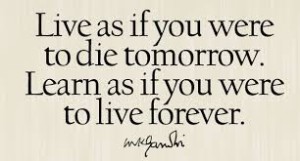
Following the massacre, Gandhi began to focus on gaining India complete self-governance and gaining Indian control of all Indian governmental institutions. As part of his peaceful protest Gandhi introduced the policy of swadeshi, which was a boycott of foreign made textiles and products, especially from Britain. This view was supported by encouraging Indians to wear khadi, a homespun cloth, as opposed to British manufactured textiles.
Just as his policies of non-cooperation were becoming most popular Gandhi called mass civil disobedience to an end. This was because of the events in February 1922 in Chauri Chauri, which resulted in widespread violence. Gandhi feared that these events would turn the cause in a violent direction and subsequently called for an end to mass civil disobedience. Following these events Gandhi was tried for sedition and sentenced to six years of imprisonment. His sentence began on March 18th 1922. However he was released in February 1924 having only served two years in order to receive an appendicitis operation.
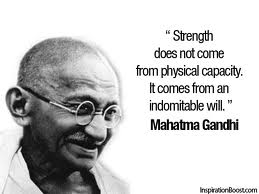
For the most part, Gandhi stayed out of active politics for the rest of the 1920s. However, this came to end at the close of 1929. On the 31st of December 1929 the Indian flag was raised for the first time in Lahore. Indian Independence day was celebrated on the 26th of January 1930. Following the announcement Gandhi organised a new Satyagraha on the tax which was imposed on salt in March 1930. This action came to its peak with the famous Salt March. The march occurred between March 12th and April 6th. During this time Gandhi marched the 241 miles from Ahmedabad to Dandi in the Gujarat region in order to make salt himself. He was joined by thousands of Indians on his march to the sea. The campaign was extremely successful at threatening British rule in India, and the government reacted by imprisoning over 60,000 people.
Following the outbreak of the Second World War Gandhi called for “nonviolent moral support” for the British cause. However after much thought, Gandhi decided that India could not support British action against the tyranny of the Nazis and for democratic freedom when Indians lacked these same freedoms at home. This led to Gandhi’s “Quit India” speech, his most definite attack on British occupation and asking for Britain to leave India. Gandhi and the entirety of his Congress Working Committee were arrested in Bombay on August 9th 1942. However he was released before the end of the war due to his failing personal health. At the end of the war Gandhi called off the protest as Britain had made clear its intention to provide India with independence. At this time 100, 000 political prisoners were also released from prison including the Congress members.
Britain kept its word and on August 14th and 15th 1947 the Indian Independence Act came into effect. However Gandhi was displeased by the act due to the partition of India and the formation of Pakistan along religious lines.
An alternative Gandhi Google Doodle design featured the Indian National leader, who in this Gandhi Google Doodle design comprised the “L” of the logo, walking in his trademark attire through a barren wilderness.
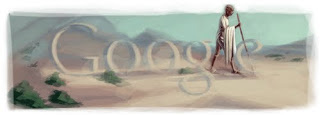
Both designs of the Gandhi Google Doodle and the accompanying blog, written by talented doodler Jennifer Hom, can be viewed by clicking here. Gandhi was assassinated on the 30th January 1948 when Nathuram Godse fired three bullets from a 9mm Berretta pistol into the nationalist icon’s chest at point blank range. Gandhi’s death was mourned nationwide and over two million people joined the five mile funeral procession.
